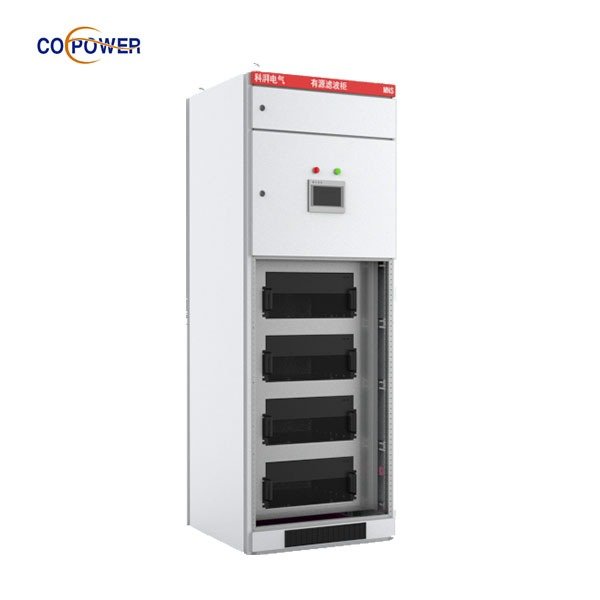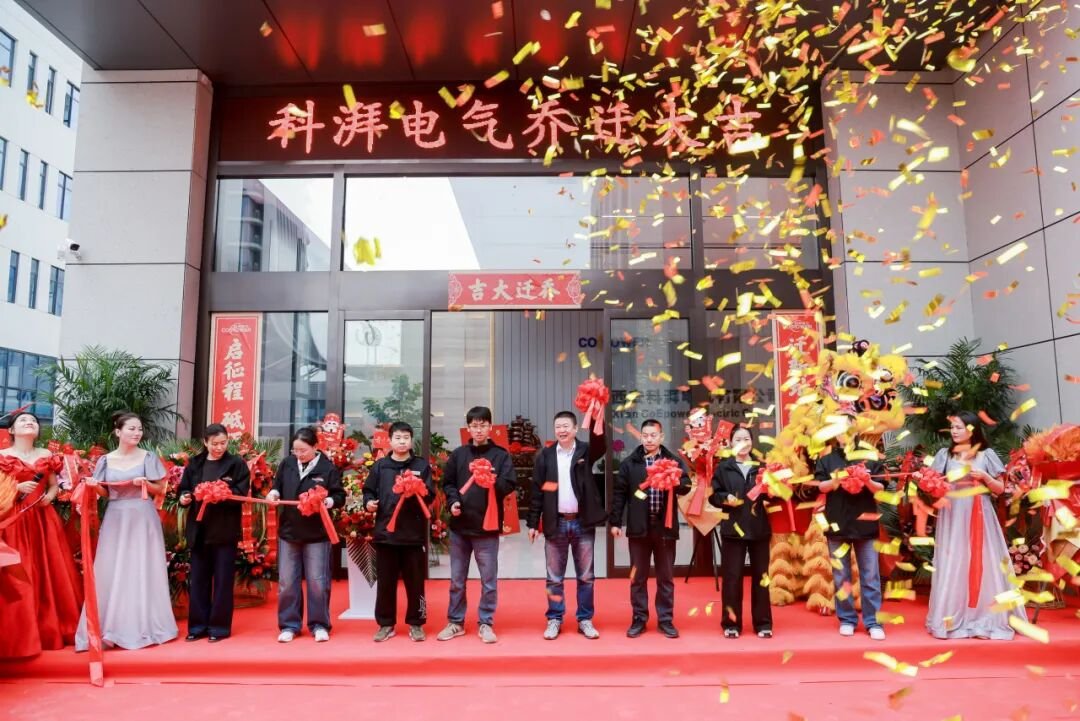Dalam jaringan listrik modern - terutama fasilitas industri yang menyalakan, pusat data, dan bangunan komersial-distorsi harmonik yang dibuat oleh beban non-linear (seperti VFD, Sistem UPS, dan pengemudi yang dipimpin) menimbulkan tantangan besar terhadap kualitas daya. Memilih strategi mitigasi harmonis yang tepat adalah kuncinya. Blog ini membahas tentang Filter Harmonik Aktif (AHFS) versus Filter Harmonik Pasif (Phfs) dan memandu Anda kapan harus memilih masing-masing—mengintegrasikan wawasan dari Solusi Filter Harmonik Aktif Coepower.
Filter Harmonik Pasif (Phfs)
PHF menggunakan komponen tradisional—induktor, kapasitor, resistor—disetel untuk menargetkan frekuensi harmonik tertentu. Mereka sederhana dan hemat biaya, ideal untuk dapat diprediksi, sistem statis di mana konten harmonis tidak bervariasi. Tapi mereka:
-Beroperasi hanya pada frekuensi yang telah dirancang sebelumnya
-Dapat mengalami masalah resonansi
-Dapat menimbulkan faktor daya terdepan saat tidak dibebani
Filter harmonik aktif (AHFS)

AHF mewakili modern, solusi dinamis. Mereka terus memantau gangguan harmonik menggunakan sensor dan DSP, kemudian menyuntikkan arus kompensasi untuk menetralkan harmonisa tersebut secara real time
Keuntungannya antara lain:
-Adaptasi waktu nyata untuk memuat perubahan
-Menargetkan berbagai harmonik
-Tidak ada faktor daya terdepan pada beban rendah
-Titik pemasangan yang fleksibel (misalnya. di PCC atau switchboard)
Kapan Memilih Filter Pasif
Terbaik untuk:
-Lajang, sumber harmonik yang stabil—seperti VFD soliter dengan frekuensi yang diketahui
-Proyek dengan anggaran terbatas—biaya awal lebih rendah; pemeliharaan yang lebih rendah
-Aplikasi dengan beban yang dapat diprediksi—sistem SCADA, penggerak motor tertentu, dll..
Kekurangan:
-Tidak fleksibel terhadap perubahan beban sistem
-Risiko resonansi dan inefisiensi dalam berbagai kondisi
-Memerlukan penyetelan per perangkat—dapat menjadi mahal jika diperluas
Kapan Memilih Filter Aktif
Ideal untuk:
-Sistem yang kompleks dengan banyak, beban variabel—pusat data, lingkungan pabrik multi-VFD
-Aplikasi yang membutuhkan THD sangat rendah (misalnya. Batasan IEEE-519: <5–8%)—AHF tetap efektif bahkan pada beban rendah
-Instalasi terpusat (titik kopling umum vs per-VFD) menawarkan fleksibilitas instalasi
-Sistem memerlukan kompensasi daya reaktif atau penyeimbangan tiga fase
Pertukaran:
-Biaya awal yang lebih tinggi
-Membutuhkan perencanaan dan konfigurasi yang terampil
-Perawatan yang sedikit lebih tinggi karena elektronik—tetapi menawarkan kinerja jangka panjang yang unggul
Filter Harmonik Aktif CoEpower: Keuntungan dalam Fokus
Mengintegrasikan wawasan APF CoEpower meningkatkan pengambilan keputusan ini:
Mitigasi Harmonik Dinamis: Memanfaatkan algoritma DSP berkecepatan tinggi untuk memantau dan mengkompensasi arus harmonik secara real time.
Faktor Bentuk Fleksibel: Menawarkan pemasangan di rak, dipasang di dinding, dan opsi terintegrasi kabinet untuk penerapan yang lancar.
Respon Cepat & Akurasi Tinggi: Ideal untuk aplikasi berat yang mengutamakan presisi dan kecepatan.
Skalabilitas: Desain modular memudahkan perluasan seiring berkembangnya profil beban; sempurna untuk operasi yang sedang berkembang.
Tabel Perbandingan Cepat
| Kriteria | Filter Harmonik Pasif (Phfs) | Filter harmonik aktif (AHFS) – Kekuatan Bersama |
|---|---|---|
| Kasus Penggunaan Terbaik | Harmonisa sumber tunggal yang stabil | Variabel, sistem multi-beban |
| Biaya | Belanja Modal Rendah, perawatan minimal | Belanja Modal Lebih Tinggi, biaya jangka panjang minimal |
| Kemampuan beradaptasi | Hanya penyetelan frekuensi tetap | Waktu nyata, kompensasi yang komprehensif |
| Instalasi | Pada setiap sumber harmonik | Penempatannya terpusat atau fleksibel |
| Pertunjukan | Memadai untuk kontrol THD dasar | Unggul di seluruh rentang beban, bahkan di bawah beban ringan |
| Faktor daya | Dapat menyebabkan PF terkemuka | Mempertahankan PF, terkadang memperbaikinya |
| Ukuran & Modularitas | Tebal, per perangkat | Kompak, modular, terukur |
| Fitur CoEpower | — | Berbasis DSP, beberapa pemasangan, respons cepat |
Kesimpulan
-Filter pasif bersinar secara sederhana, sadar anggaran, dan lingkungan yang stabil.
-Filter aktif, khususnya APF CoEpower, excel di mana beban berfluktuasi, presisi itu penting, dan skalabilitas di masa depan sangatlah penting.
Jelajahi Halaman Produk Filter Harmonik Aktif kami untuk mempelajari lebih lanjut:
Dengan menyelaraskan filter yang tepat dengan kompleksitas sistem Anda, kebutuhan kinerja, dan infrastruktur, Anda memastikan kualitas daya yang optimal, efisiensi, dan keandalan.
Tag: Filter Harmonik Aktif vs Pasif, Kapan menggunakan Filter Harmonik Aktif, Kelebihan/kekurangan Filter Harmonik Pasif, Filter harmonik aktif koepower, Strategi mitigasi yang harmonis, Pengurangan THD sistem kelistrikan, Teknologi APF berbasis DSP, Filter harmonik yang dipasang di rak.


